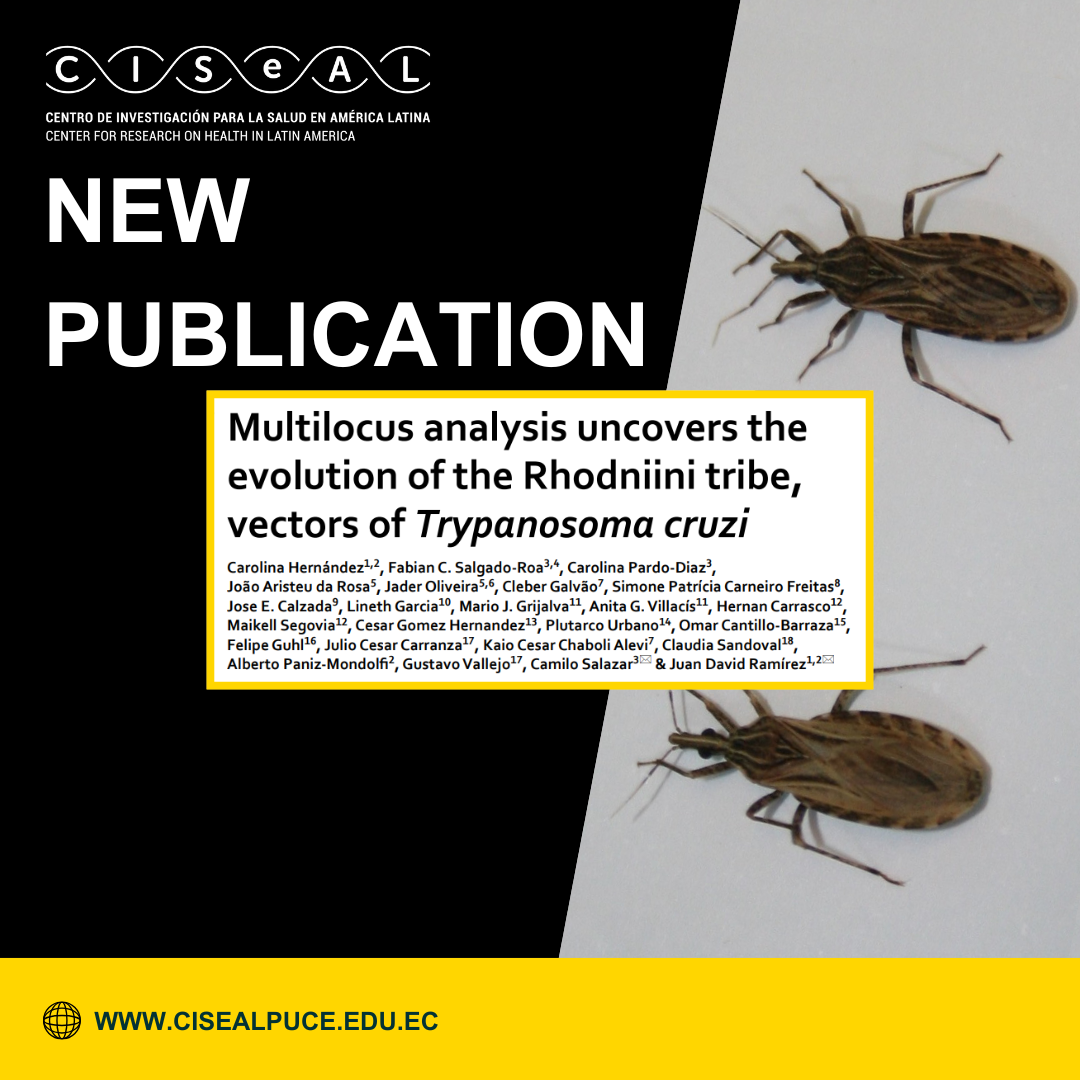 The most recent research in which CISeAL principal investigators Dr. Anita Villacís and Dr. Mario Grijalva participated sheds new light on the evolution of the group of insect vectors of Trypanosoma cruzi belonging to the tribe Rhodniini, fundamental in the transmission of Chagas disease. Through an unprecedented multilocus phylogenetic analysis, which included eight genes in 497 specimens of 17 species collected in seven countries, it was revealed that the current classification of this group does not reflect its evolutionary history. The paraphyly of the genus Rhodnius is confirmed, with the three species of the genus Psammolestes forming a monophyletic clade within it, although some alternative analyses position them as distinct sister groups. The prolixus group was found not to be monophyletic, in contrast to the pictipes and pallescens groups, which did show phylogenetic coherence. The divergence of the common ancestor of Rhodniini would have occurred approximately 5.26 million years ago, indicating a more recent origin than previously proposed, with key diversification events coinciding with Pleistocene climatic changes. Only four species—P. arthuri, R. ecuadoriensis, R. neivai, and R. neglectus—were consistently delimited as clear evolutionary units, calling into question the number of valid species recognized in the tribe.
The most recent research in which CISeAL principal investigators Dr. Anita Villacís and Dr. Mario Grijalva participated sheds new light on the evolution of the group of insect vectors of Trypanosoma cruzi belonging to the tribe Rhodniini, fundamental in the transmission of Chagas disease. Through an unprecedented multilocus phylogenetic analysis, which included eight genes in 497 specimens of 17 species collected in seven countries, it was revealed that the current classification of this group does not reflect its evolutionary history. The paraphyly of the genus Rhodnius is confirmed, with the three species of the genus Psammolestes forming a monophyletic clade within it, although some alternative analyses position them as distinct sister groups. The prolixus group was found not to be monophyletic, in contrast to the pictipes and pallescens groups, which did show phylogenetic coherence. The divergence of the common ancestor of Rhodniini would have occurred approximately 5.26 million years ago, indicating a more recent origin than previously proposed, with key diversification events coinciding with Pleistocene climatic changes. Only four species—P. arthuri, R. ecuadoriensis, R. neivai, and R. neglectus—were consistently delimited as clear evolutionary units, calling into question the number of valid species recognized in the tribe.
Discordances between trees obtained by different methods and loci suggest that processes such as gene flow, population structure, and incompletely separated lineages affect the phylogeny of this group. The high genetic variability in certain mitochondrial genes, as well as the population structuring observed by STRUCTURE analysis, suggest that geography has played a more determinant role than classical taxonomy in the evolution of these vectors. These findings are fundamental to improve surveillance and vector control programs, as they allow a more precise understanding of the diversity, connectivity, and transmission potential of species traditionally recognized as primary and secondary vectors of Chagas disease, and reinforce the need to address the systematics of Rhodniini from an integrative approach that combines genetic, ecological, and biogeographical data.
Do you want to know more about this research?
We invite you to read the full article at the following link:
https://www.nature.com/articles/s41598-025-03789-9



